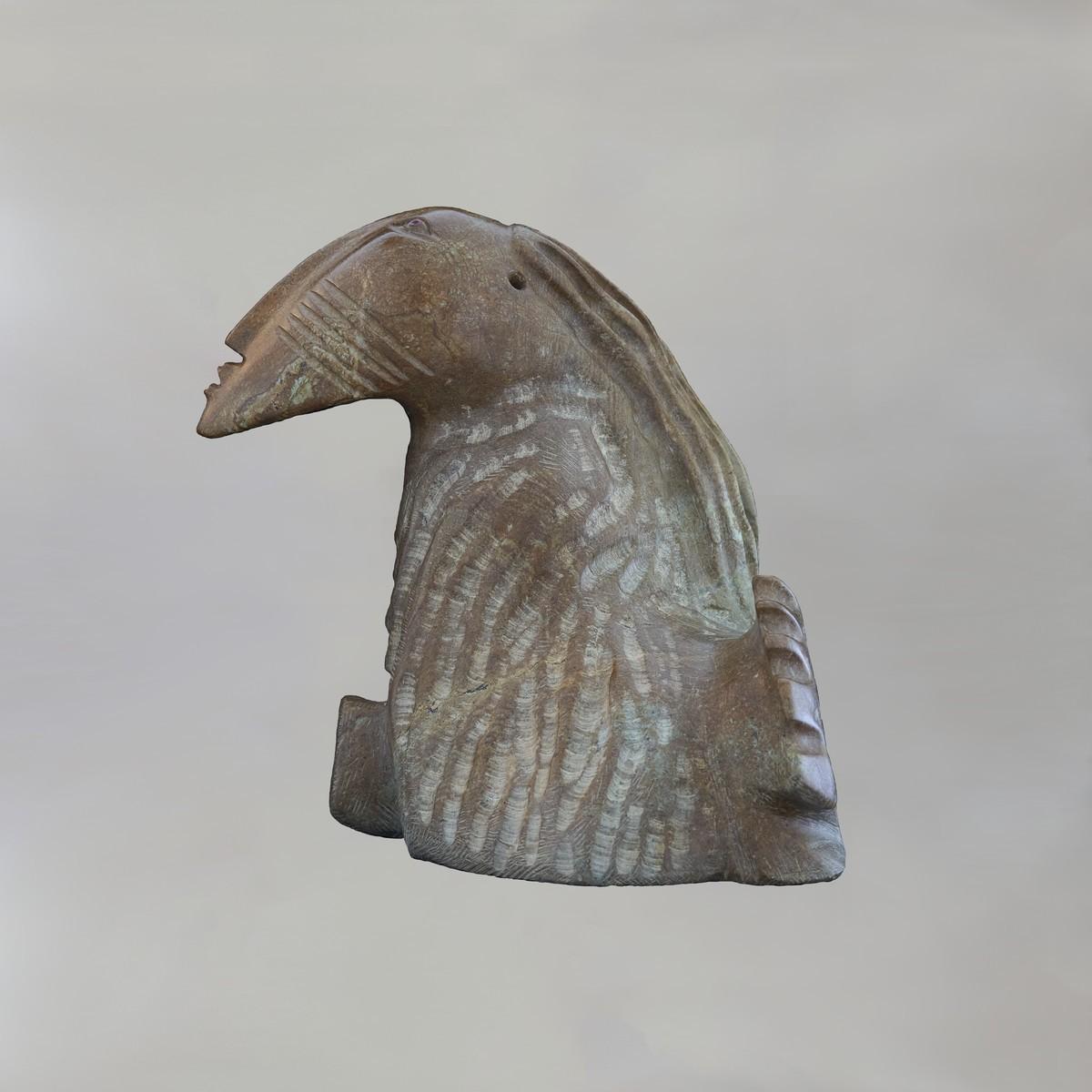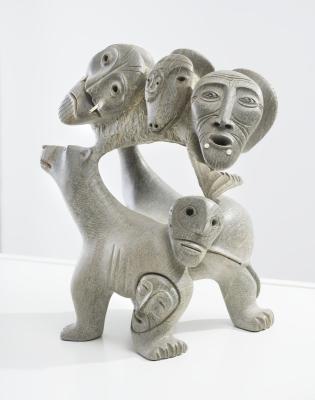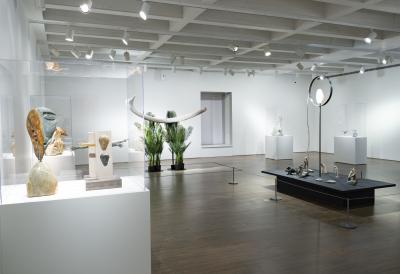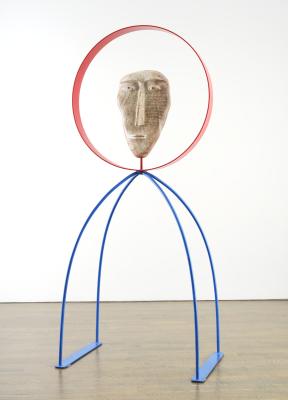Her Place in the Sea and Her Name in the Stars
Emily Henderson writes about Sedna, the goddess of the sea, as carved by David Ruben Piqtoukun.

David Ruben Piqtoukun. The Birth of Sedna, 2022. Brazilian soapstone, red pipe stone, Overall: 53.3 × 30.5 × 40.6 cm. Courtesy of the artist. © David Ruben Piqtoukun. Photo: Charles A. Ross
By Emily Henderson, AGO Curatorial Research Assistant, Indigenous and Canadian Art
Far in the deep reaches of the solar system, a trans-Neptunian object by the name of 90377 Sedna slowly orbits around the sun to the tune of about 11,408 Gregorian years per rotation. This dwarf planet, discovered in 2003, was named in honour of Sedna, the Inuit goddess of the sea, referencing how just as Sedna lives deep beneath the waves of the Arctic Ocean, 90377 Sedna, too, dwells far from the rays of the sun. In 2022, this small, reddish-hued world reached perihelion, the closest it comes to the sun during its orbital journey.
At this same time, also in 2022, sculptor David Ruben Piqtoukun ᑎᕕᑎ ᐱᑐᑯ ᕈᐱᐃᓐ was carving The Birth of Sedna in brilliant red pipestone. The finished work is now on view as a part of David Ruben Piqtoukun: Radical Remembrance in the Philip B. Lind Gallery on Level 1 (gallery 132) of the AGO until June 25, 2023. Piqtoukun, who frequently creates work that references the cosmic travels of Shamans, also regularly depicts the Sea Mother, on whom Inuit have relied for millennia to provide the fish and sea mammals that form a staple in our diets.
There are a few notable characteristics in Piqtoukun’s carving of Sedna. An elongated, marked face that could reference tunniit, the traditional facial tattoos typically worn by Inuit women. Tiny ear holes that remind one of seal ears. Her hands, at first glance, appear like flippers, but on closer inspection, it becomes clear they are the hands of a woman, with her fingers severed at the knuckle. The moment when Sedna’s fingers are cut is a key moment in the story of her birth into a goddess. While there are many regional variations on the story, we know from oral tradition that Sedna’s fingers were cut off as she clung to the side of a boat and later fell into the water. Once in the water, she transformed into the sea mammals, and made herself a new home at the bottom of the sea. Many Inuit women, including myself, have this story immortalized in our own markings, with tattooed horizontal lines across our fingers that honour the moment Sedna transformed from woman to goddess.
The story continues that, without her fingers, Sedna could not comb and braid her hair. She relied on Shamans to make the trip down to the bottom of the sea to help her. Shamans were among the original voyagers, boldly going where no one had ever gone before – deep into the ocean and far beyond the moon and stars. Sedna, the goddess of the sea, has her place in the sea and her name among the stars.
The Birth of Sedna (2022) (image at top) is one of 50 works by sculptor David Ruben Piqtoukun now on view at the AGO as part of Radical Remembrance. The solo retrospective, curated by Wanda Nanibush, AGO Curator, Indigenous Art, highlights the Governor General Award winner’s 50 years of artistic production with early and recent works.

Installation view: Radical Remembrance: The Sculptures of David Ruben Piqtoukun, January 21 - June 25, 2023, Art Gallery of Ontario. Artworks © David Ruben Piqtoukun.
Read this Q&A with Piqtoukun, in which the artist discusses his solo exhibition and career.




